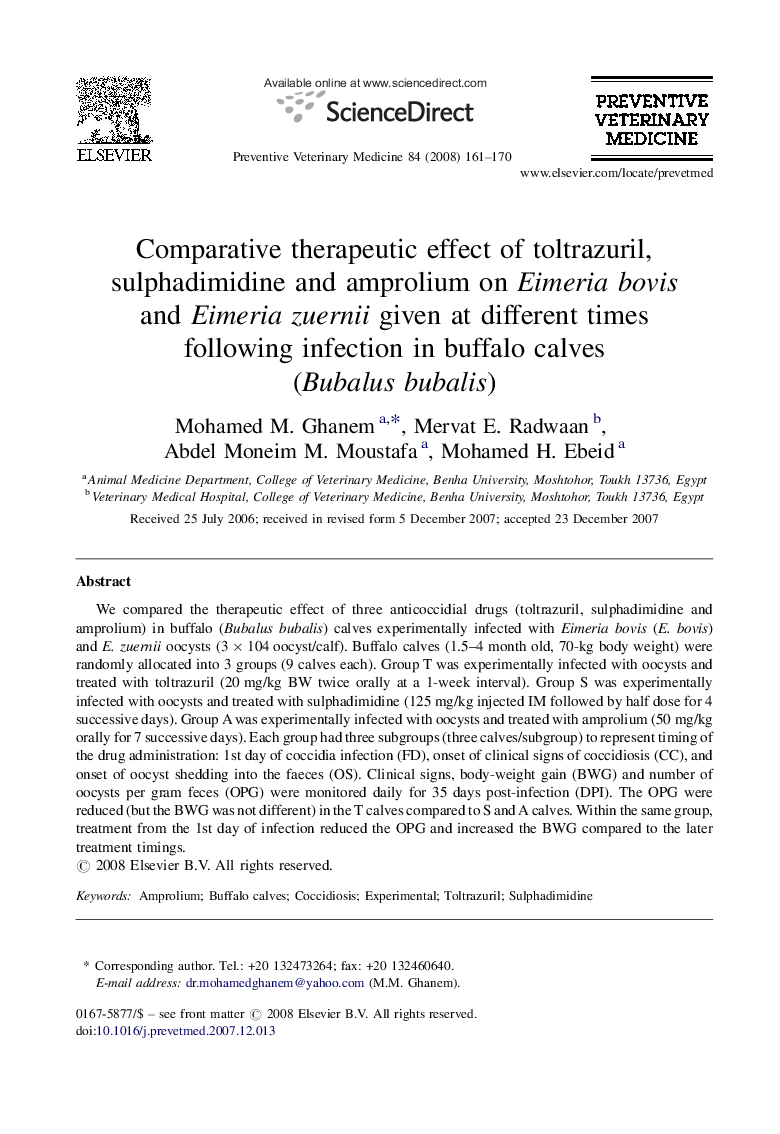| Article ID | Journal | Published Year | Pages | File Type |
|---|---|---|---|---|
| 2453389 | Preventive Veterinary Medicine | 2008 | 10 Pages |
We compared the therapeutic effect of three anticoccidial drugs (toltrazuril, sulphadimidine and amprolium) in buffalo (Bubalus bubalis) calves experimentally infected with Eimeria bovis (E. bovis) and E. zuernii oocysts (3 × 104 oocyst/calf). Buffalo calves (1.5–4 month old, 70-kg body weight) were randomly allocated into 3 groups (9 calves each). Group T was experimentally infected with oocysts and treated with toltrazuril (20 mg/kg BW twice orally at a 1-week interval). Group S was experimentally infected with oocysts and treated with sulphadimidine (125 mg/kg injected IM followed by half dose for 4 successive days). Group A was experimentally infected with oocysts and treated with amprolium (50 mg/kg orally for 7 successive days). Each group had three subgroups (three calves/subgroup) to represent timing of the drug administration: 1st day of coccidia infection (FD), onset of clinical signs of coccidiosis (CC), and onset of oocyst shedding into the faeces (OS). Clinical signs, body-weight gain (BWG) and number of oocysts per gram feces (OPG) were monitored daily for 35 days post-infection (DPI). The OPG were reduced (but the BWG was not different) in the T calves compared to S and A calves. Within the same group, treatment from the 1st day of infection reduced the OPG and increased the BWG compared to the later treatment timings.
